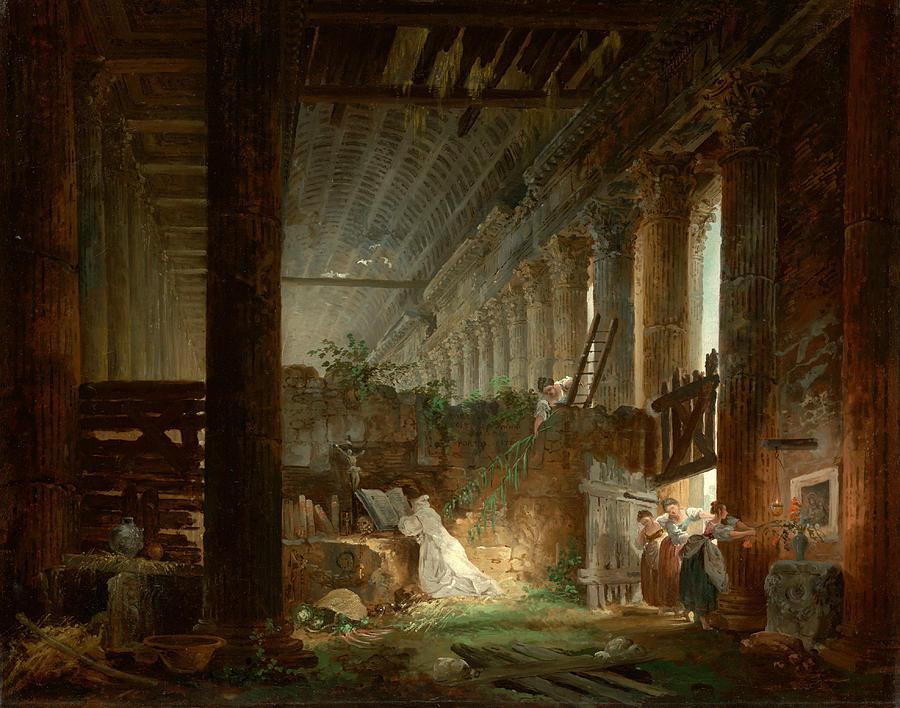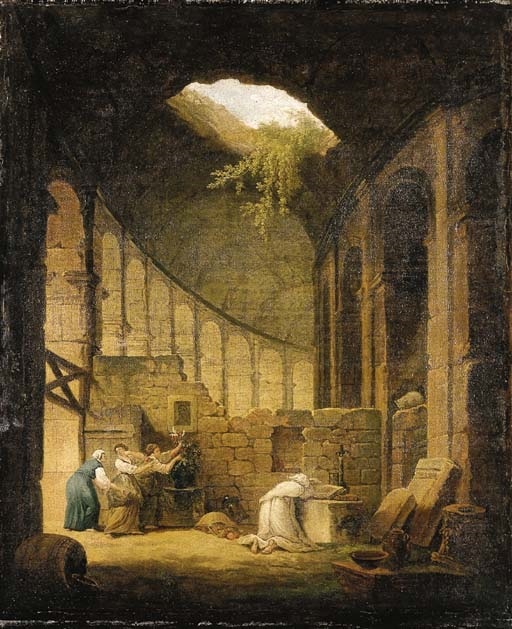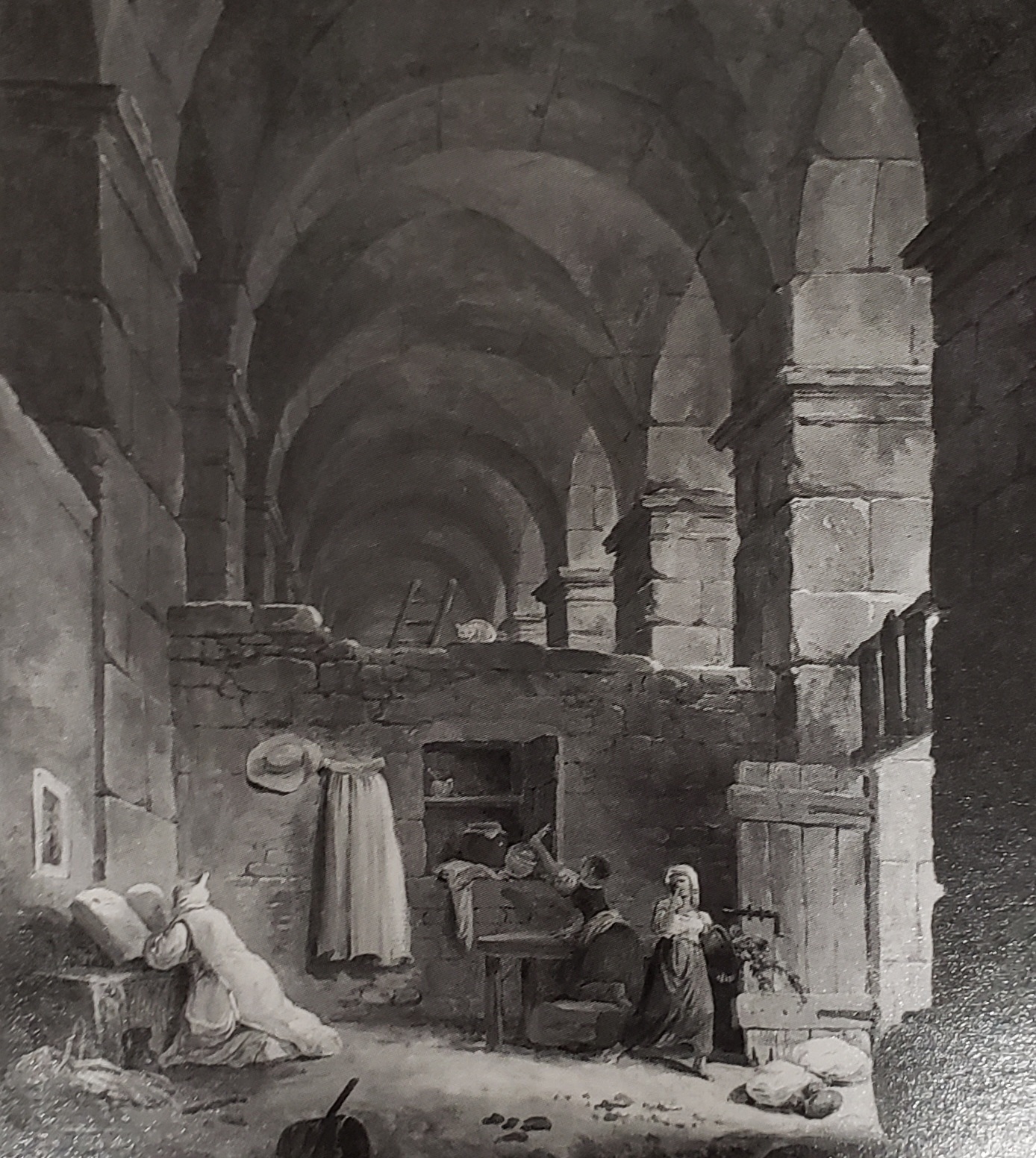The painting you just clicked is called "A Hermit in Prayer in the Ruins of a Roman Temple" by Hubert Robert


A catalogue entry that sat beneath it described the painting as follows: "Beneath the debris of architectural ruins a kneeling monk at prayer is seen; near the entrance door, young girls are apparently busy decorating his retreat; another, at the top of a ladder and outside the room, attempts to reach him with a read."

More than just "decorating" and "attempting to reach him," the girls seem to be sort of taunting the hermit and playing a prank on him. The painting could be argued to be poking fun at the eremetic brand of austerity.

There was a trend in the 18th century where christian hermits (anchorites) were the popular subjects of European paintings. For some painters, like Marco Ricci and Francois Boucher, the hermit as a subject was used to express ideas of sanctitiy and old age. These paintings were often idyllic yet "melodramatic scenes" of hermits "lost in prayer in the wilderness."

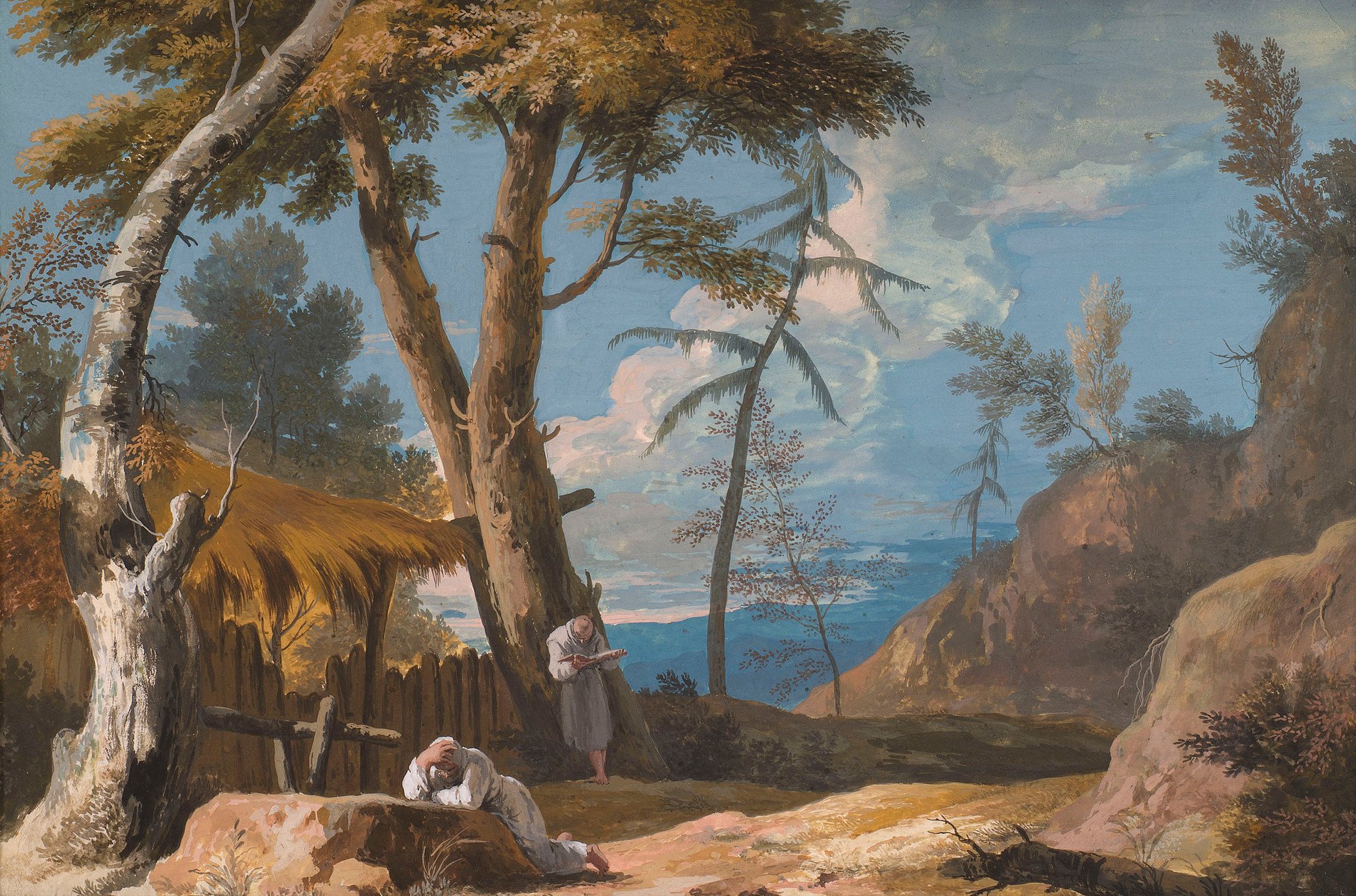
Monks at Prayer by Marco Ricci

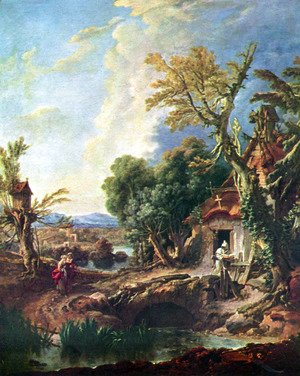
Frere Luce by Francois Boucher

In Robert's work, the subject of the hermit wasn't handled in "a high-minded or moralizing way, but rather with irreverent mockery."
In another one of Robert's paintings, "A Preacher Amoung Ancient Ruins," a anchorite is depicted gourging on cherries after his sermon has bored the surrounding crowd to sleep.

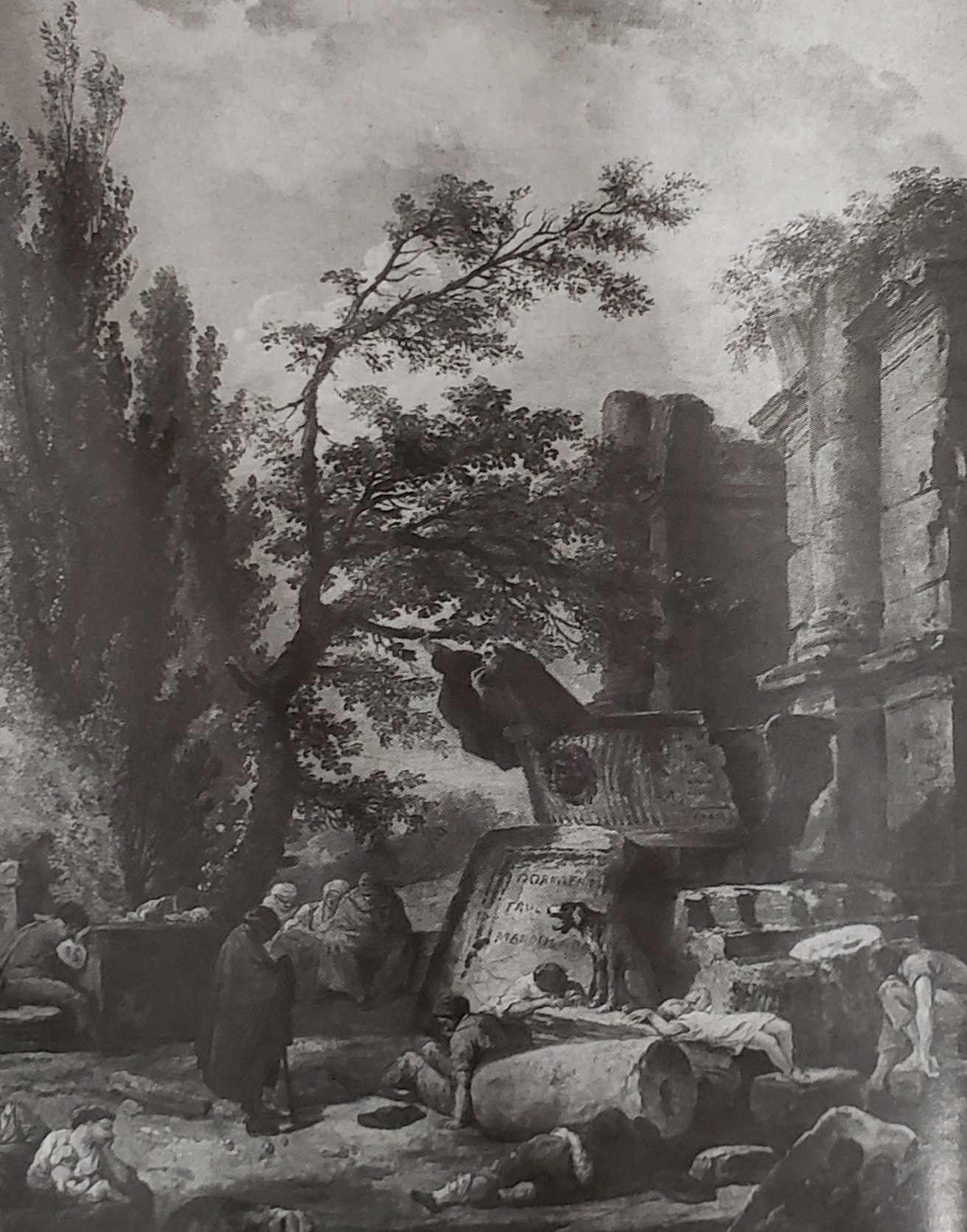
A Preacher Amoung Ancient Ruins by Huburt Robert

It is unclear where Robert stood with the ideology and beliefs of the eremetic lifestyle, but the shear volume of hermit-centric paintings that he created suggests they had a "special appeal" to him.

Further complicating this appeal is the known fact that Robert's parents decided early on in his life that he would join the clergy, and it was "over his parent's objections" that he chose to be a painter.

Huburt Robert was reported to have a "jolly and gregarious" personality that allowed him to "make friends easily."

Robert's reported charisma and extroversion are somewhat ironic when put up against the subjects of many of his paintings. That is until you remember that most if not all of his hermit-related work was made to mock. But perhaps there is still room for speculation on whether or not his interest ran deeper than that.

Robert had a "penchant for painting architecture," with the subject of ruins often springing up throughout his work. After seeing a painting (now lost) by Robert, the French philosopher, Diderot, wrote,
"The ideas that ruins awaken within me are grandiose. Everything is annihilated, everything perishes, everything passes out of existence; the world alone remains, time alone endures. How old the world is. I walk between eternities. Wherever I cast my eyes, the objects surrounding me speak of an end and make me resided to that which awaits me."

Again, Robert's own thoughts on ruins and time are only up for interpretation. But perhaps it can be speculated that there is some link between Robert's apparent interest in the enormous scale of the natural world and the passage of time and his interest in the isolated, somewhat patoral life of the hermit.


Hubert Robert


Hubert Robert

There were many different versions of "A Hermit in Prayer." Sometimes the characters are in a different setting. Sometimes the three girls are outright thieves rather than pranksters or they tease the hermit in different ways. But in every painting, the hermit is too deep in prayer to notice them.



Many of the 18th century hermit paintings took inspiration from "vanitas," a genre of art where painted items are given very specific meanings.

The hermit is often placed side-to-side with a rosary, an hourglass, a large tome, a crucifix, and a skull, all items
"meant to convey certain elemental truths of existence: the ineluctable flight of time, the futility of human endeavor, the frailty of life, the inevitable triumph of death and material destruction."

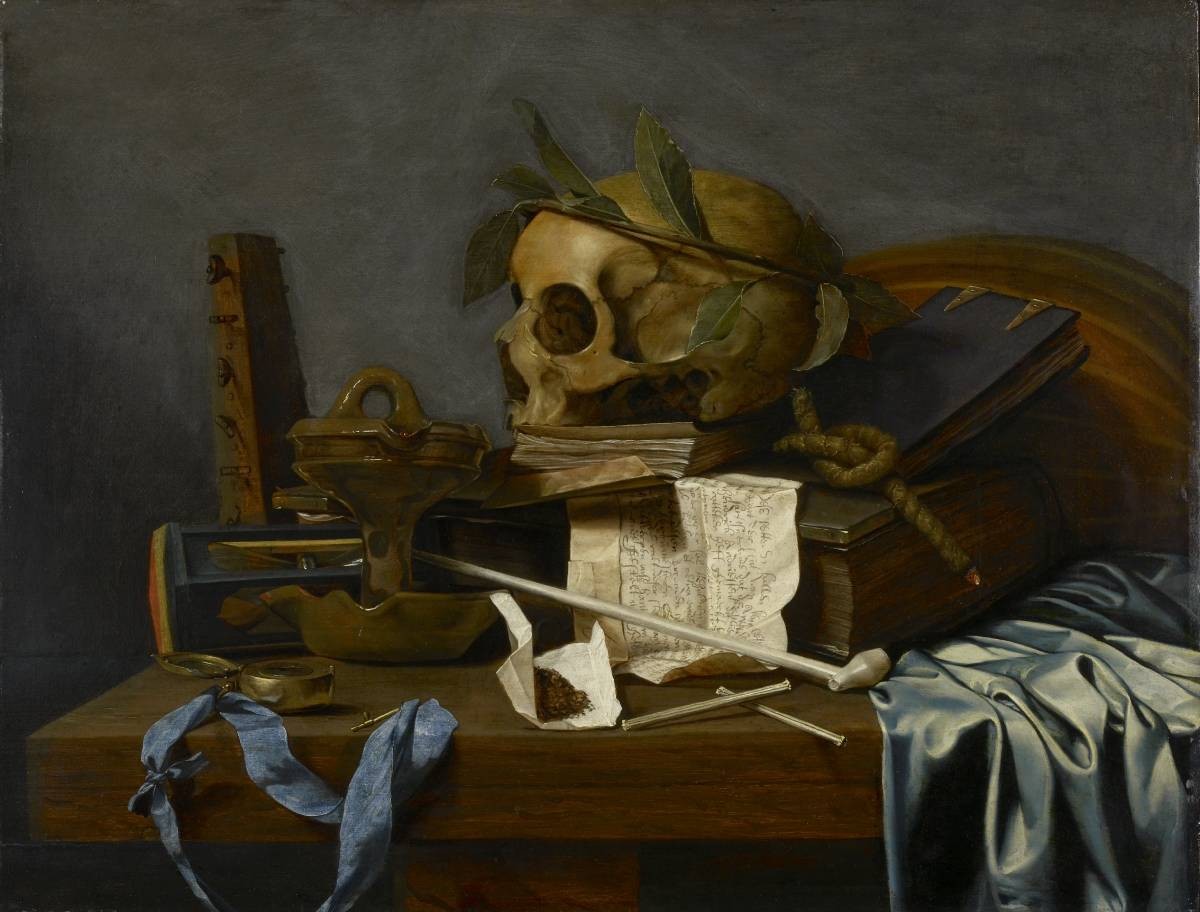
Still Life (Vanitas) by Hendrick Andriessen

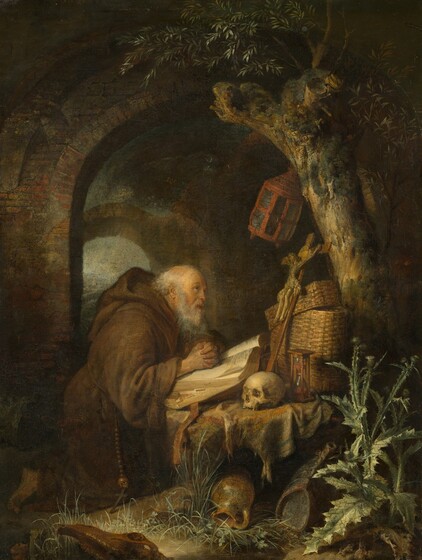
The Hermit by Gerrit Dou

These items really go to show how symbolized the christian hermit was in the collective cultural psyche of 18th century Europeans. They're easy symbols to fall back on in literature and painting, considering their entire identities revolve around pious devotion and isolation in the wilderness.



